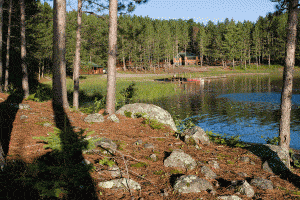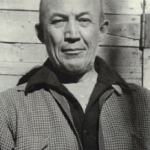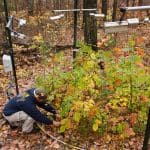By Austen Macalus, published with permission, originally appeared on Minnesota Daily
The Hubachek Wilderness Research Center provides unique access to research.

Amidst ongoing debate about mining near the Iron Range, University of Minnesota researchers in the Boundary Waters Canoe Area Wilderness are continuing their work with a skeptical eye toward the future.
The Hubachek Wilderness Research Center sits on the edge of northern Minnesota’s vast wilderness, a launching point into the Boundary Waters. The region has become a focus of controversy. In September, the Trump Administration reversed a ban on renewed mineral leasing on a 365-square-mile area in Superior National Forest, within the BWCAW’s watershed.
University assistant scientist Beckie Prange works and lives at the center year-round, serving as a steward for environmental scientists and researchers – an area full of wilderness, wildlife and wonder.
The facilities, which date back to the 1930s, moved to the Fall Lake location after Congress added the Boundary Waters to the National Wilderness Preservation System in 1964. The Hubachek Center, originally owned by a Chicago family, was gifted to the University in 2014.
The Hubachek Center sits on Fall Lake, just east of Ely, with 350 acres of boreal forest. The center has long been a hotspot for research inquiry, Lange said.
“There’s a history of research here,” Prange said. “There’s so much to be discovered.”
Today, Prange helps facilitate access to research sites near Hubachek, where researchers can study everything from forest ecology to wildfires to climate change. The center hosts several researchers every year, many staying for a few days to collect data on plots of land.
One project, called B4Warmed, studies the effect of climate change on tree species by heating plots of land above ambient temperatures, she said.
But today’s researchers are not the first to use the land.
“A lot of those areas … have these long histories of use by indigenous people like the Ojibwe,” said Lane Johnson, a research forester at the University who has studied the cultural history of the BWCAW.
Historically, Native Americans used the land for activities like hunting moose, gathering blueberries, collecting maple syrup and harvesting wild rice, he said.
“Some of that human history impacts the ecology of these areas,” Johnson said.
Although many people consider the Boundary Waters “untouched,” people have played an important role in the area, even when they don’t interfere with the forest, said Kyle Gill, a forest manager at the University’s Cloquet Forestry Center.
“Sometimes we choose to engage in those processes and sometimes we choose to disengage,” Gill said. “Even when we’re not doing active treatment, there’s still change that’s happening that’s indirectly related to our actions.”
Until this point, people have predominantly used the area’s wilderness for recreation, Gill said.
“The resources we’re pulling out of there are primarily memories and primarily experiences, rather than minerals or other more tangible resources,” he said.
In the coming years, mineral exploration in the wilderness outside the BWCAW would change researchers’ work at Hubachek, Prange said.
She said she’s trying to see the positive — there could be new opportunities for researchers, like comparing forest health before and after mining.
“[But] it’s a lot more bitter than sweet,” Prange said.“I don’t think we need big changes to happen to provide enough opportunities for research.”
The Hubachek Center, she said, is a great place to study for a reason.
“I think it takes a lot of time to slow down and start observing,” she said. “Once you get out in the woods and you aren’t distracted, I think it’s easier to learn.”
Find out more about the Hubachek Wilderness Research Center and Cloquet Forestry Center



